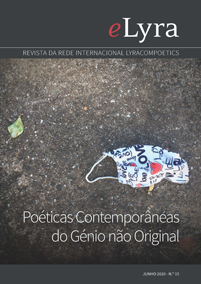A alegoria como poética do (ex)combro em Manoel de Barros: uma visada benjaminiana
Abstract
Walter Benjamin was one of the philosophers who most appropriately discussed the dialectics of history as a movement of extremes, that is, as an impoverished present experience before the glories of the past, which conceals, ironically, another formulation, exposed in the 9th thesis “On the concept of history”: which presents the interpretation of the allegory (ex)put in The Angelus Novus, by Paul Klee, as the “hippocratic facies of history” (Benjamin 1984), thinking this image as “the core of allegorical vision” (ibidem). Manoel de Barros, in his time, dialogues with both Klee and Benjamin, in a movement of (ex)position of episodic scenes/fragments of a nature always in a state of violence, suffering, tedium and death, despite an appearance of exuberance and abundance. In this essay, we propose to discuss/read in Barros’ poetry these poetic-allegorical constructions of nature, especially in the light of The Origin of German Tragic Drama and the thesis 9 of Theses on the Philosophy of History by Walter Benjamin (1984 and 1986, respectively), as well as texts by Jeanne Marie Gagnebin (2013) and Michel Löwy (2005) on allegory in the Benjamin’s perspective.


